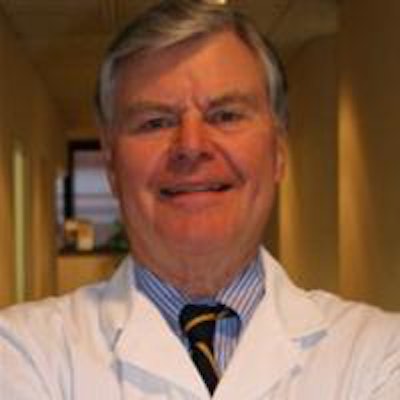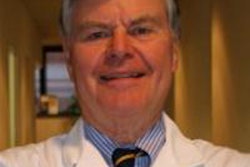
The fire is out. Most dentists face the problem of regaining interest in the profession after years of the same old procedures. How can you bring the passion back? Will expanding your scope of practice rekindle the burnout? Are you concerned about the financial rollercoaster in today's uncertain economic and political environment? Do you envision a practice that puts the patient first, or one based on arbitrary goals?
In my personal and professional journey from frustration and burnout to feelings of satisfaction and contribution, there were problems on two fronts. One was my professional growth and the second was team building. I always found the people part of dentistry more difficult. The dental technology was easier. I could take a course on a specific technique and then incorporate it into my practice on my terms.
Dealing with the dynamics of our team was much more complex. I had no training in management or psychology, and yet I was forced to deal with elements I had never envisioned.
Workplace dynamics
Why do people work?
I think most people work to satisfy needs. People work, in part, to gain a feeling of self-respect or self-esteem. Some work just to make a living.
 William T. Brown, DDS.
William T. Brown, DDS.
If your goal is money, you will never reach it. How much is enough? Money is only one way of keeping score.
In the hierarchy of basic motivations of survival are food, water, shelter, sex, and safety. In the society in which we live, most of these needs are provided for. That's why it's called an affluent society. Because these basics are met, for the most part, people in our contemporary culture desire to feel wanted, needed, involved, and accepted, as well as make contributions and belong to a group or organization that provides a purpose for what they are doing.
Early in my career I had low self-esteem. I wasn't certain of my own needs. I didn't feel appreciated by my coworkers or my patients. I didn't feel like I was receiving proper recognition or appreciation for my capabilities. At that time, I didn't realize that my staff had completely different frames of reference, education, and stimulus.
So how was the picture turned around?
First, I gave serious thought about what I was doing on a daily basis. I realized that I needed to gain personal and professional satisfaction from creative work as a dentist, by enjoying the respect, creativity, and joy of simply being occupied in my own special work. Being motivated not primarily by money and financial gain, but by the work itself, by self-esteem and the admiration of the people I was associated with, my patients and coworkers. This became a reward that motivated me more than money.
The preventive dentistry movement presented an enormous incentive for establishing relationships that were a continuous process conditioned by goodwill and responsive attitudes.
Teaching patients to change ingrained habits forced me to enlist a behavioral scientist. Nathan Kohn Jr., PhD, challenged me to educate my patients and staff in a philosophy of practice that they could easily understand and repeat to friends on how their relationship with me benefited them, immediately and in the years ahead.
Knowing the history and sequence of the new scientific information was empowering to my coworkers and me. The following are our conclusions:
- We needed to teach the interruption of a disease process, not a technique of flossing and brushing.
- Patients were responsible and accountable for their oral health.
- We needed new systems to share the new science with our clients.
Our staff was motivated to develop a philosophy of dental practice that reflected this new information and technology. We studied the science of dental disease and applied the principles personally. For example, as a staff, we didn't brush or floss for an entire week. One quadrant in each person's mouth had seven days plaque growth, one quadrant had five days growth, one quadrant had three days growth, and the final quadrant had one-day growth.
At the end of the week, we stained with erythrosine, examined our mouths as a staff, and took plaque samples to view under phase-contrast microscopy. We noted any areas of gingival bleeding that developed during the seven-day period. One of our auxiliaries developed gingival bleeding in one week.
This experiment was a powerful educational experience for the entire staff. One auxiliary even made the connection of our experiment to the famous research project by Harald Löe, DDS, DrOdont, on Danish dental students. Dr. Löe found that 100% of his students elicited gingival bleeding in seven to 21 days of growing plaque.1 My staff had corroborated the study in our experiment, and they had firsthand knowledge that biofilms that weren't disturbed daily caused dental disease.
For the first time our staff was totally committed to educating patients on controlling oral disease. They had seen the effects personally and validated the science. We were now obligated to share this knowledge with our patients.
As an office that was dedicated to education, we developed a codiscovery examination that motivated patients to be responsible and accountable for their oral health instead of being objects of treatment. Another mentor, Robert Barkley, DDS, was influential in guidance for this procedure. The comprehensive oral examination we developed as a team was a direct reflection of our professional philosophy. It was based on educational psychology and science. Our examination instantly communicated to the patient that our practice was exceptional.
The codiscovery exam resulted from several influential teachers; however, my staff contributed greatly to our unique system. For example, we developed dental metrics that established baseline data of each patient's initial status. The information gathered was baseline data to quantify patient progress, with the "normal" periodontal tissues as the gold standard. The ability to scientifically assess gingival response was a missing link in the preventive dental movement.
Collaboration
My staff had some awareness of my technical abilities, knowledge, and skill, but they had little comprehension of the time, education, and money invested on behalf of my patients. How do you let them in on that?
Bringing the staff together as a functioning team was accomplished in concert with our patient-centered philosophy. We developed a defined shared vision of our practice. It began with learning about our self-concepts, blind spots, biases, and prejudices, and how these impacted our ability to function as a unit.
One of the most important enterprises for understanding our symbiotic relationship was a series of in-house practice analysis workshops. The process was as important as the analysis. We learned to understand each of our personal identities through profiling and intercommunication that developed accord and rapport.
Together we completed an appraisal to become keenly aware of what we had created. What was our practice? Where were we? The record of our practice was the best evidence as to what had happened.
The primary purpose was to think through our situation as a team. It was a guideline to growth, development, and progress toward goals we had expressed. It became the basis for decision-making.
The professional and personal maturation that resulted from these endeavors was evident in each individual. We were now true partners in mutually agreed-upon beliefs. These principles were by agreement and not acquiescence.
The fire and passion for practice were relit and remained stoked for another 40 years. Technology is a critical imperative in professional growth, but it is only part of the equation. Motivation created by new knowledge and self-understanding creates an alliance and partnership that unify coworkers.
The shared convictions allowed each team member to believe and articulate a common message to our valued clients and believe in what we were doing.
Reference
1. Löe H, Theilade E, Jensen SB. Experimental gingivitis in man. J Periodontol. 1965;36:177-187.
William T. Brown, DDS, practices in Des Moines, IA, and writes a monthly blog, Dental Intelligence, to share information and experiences that have fundamentally changed the way dentistry is practiced.
Note: Some ideas embodied in this article are the result of personal communications with Dr. Robert Barkley, Dr. Nathan Kohn Jr., and Dr. Robert L. Burns, Collaboration on Dental Metrics.



















